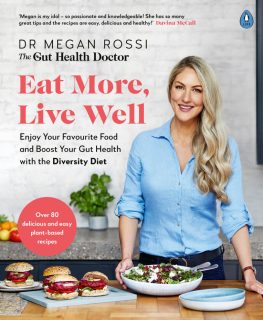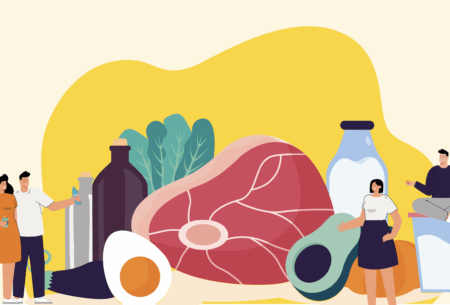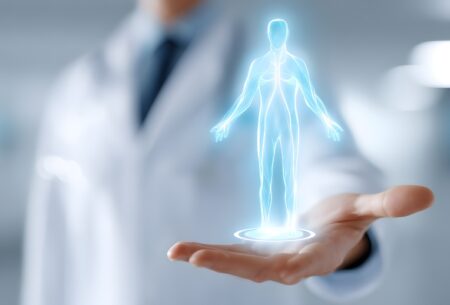Women’s nutrition needs across our life cycle
Ladies, have you ever considered your own unique nutritional needs for the amazing yet demanding changes your body goes through in our life cycle? They’re uniquely dynamic and change over time to support the hormonal and life changes you go through.
Here’s how you can support your body and health over time by optimising your nutrition, from teenage years, adulthood, motherhood (if you’re going down that route) and menopause – as well as giving yourself a little protection against some of the troublesome side effects.
And this one’s not just for the ladies, either! Gentlemen, have a read too and give the women in your lives the support they deserve.
Adolescence: Puberty and beyond
Iron
During puberty and the start of your periods, your iron needs increase by a whopping 70% to enable growth and to replace iron lost during menstruation. The increased need for iron continues throughout adult life until menopause (when periods stop).
As adults, women require 70% more iron than men, yet in the UK, half of girls aged 11-18 years aren’t getting enough. This can carry on into adulthood, with a quarter of adult women not eating enough iron, leaving women at risk of iron deficiency anaemia, which affects around 15% of women in developed countries. The signs and symptoms of iron deficiency anaemia include fatigue, shortness of breath and noticeable heartbeats (heart palpitations).
Prescription iron supplements are often used to treat iron deficiency anaemia (these tend to be stronger than the publicly available supplements), and can sometimes come with side effects impacting your gut – including constipation, diarrhoea, tummy pain and dark coloured poop.
Why?
Much of the iron in supplements is unabsorbed in the small intestine (which is normally where most of our food gets digested), so instead, it makes its way down to our large intestine, where we house most of our gut microbes. It’s here it comes into contact with our GM and can result in gut symptoms, especially if taken without food.
Full disclosure
Studies looking at the effect of iron supplements on your GM are limited and show mixed results, so it’s too uncertain to draw any firm conclusions yet. We’ll be sure to keep you updated when we do.
With a bit of consideration, it is possible to fulfil most people’s iron needs with diet, and there are a number of types worth knowing.
It’s important to note there are two types of iron:
- Haem iron (from animal products)
- Non-haem iron (from plant sources)
Non-haem iron from plants isn’t absorbed as efficiently by the body, so it can be a little trickier to meet your iron needs with a completely plant-based diet – that’s where a bit of planning goes a long way.
Top tips for optimising your iron intake
- Good plant-based sources of iron include: tofu, lentils, chickpeas, beans, nuts, chia seeds, linseed, pumpkin seeds, dark green leafy vegetables (kale, broccoli, spinach), dried apricots, quinoa and fortified cereals.
- Add some vitamin C. If you’re 100% plant-based, vitamin C helps with the absorption of non-haem iron. While it’s not completely clear to what extent this will improve iron levels in your blood, it’s a good idea to think about food pairing plant-based iron sources with vitamin C
- Enjoy a fruit salad after bean, lentil or chickpea dishes – such as kiwi, pineapple, strawberries and orange
- Add vitamin C-containing vegetables, such as tomatoes and peppers, to stir-fries, bean chilli and lentil curries
- If you’ve been prescribed iron supplements, make sure you also get enough fibre and fluid, as well as physical activity, to keep things moving. Dark coloured poop can be quite normal (unabsorbed iron can change the colour), but always reach out to your healthcare provider if you’re getting any side effects and aren’t tolerating supplements well – that way, the dose, type and timing can be reviewed
Calcium & Vitamin D
Your bone density foundations are largely made in your teens and calcium and vitamin D are two key nutrients here.
Top tips to optimise your calcium and vitamin D
- If you’re 100% plant-based, go for plant-based milk-alternatives that are fortified with calcium.
- Take a vitamin D supplement, especially in the winter months. In the UK, the recommendation is to take 10mcg daily throughout the winter, or if you’re staying at home, covering your skin or have dark skin, as this makes it harder for the sunlight to stimulate vitamin D production). Recommendations can vary, so it’s worth checking local guidelines.
Adulthood (& child-bearing years)
If you plan to, or do become, pregnant, your nutritional needs change again here too. This is, of course, to enable the growth and development of your baby. Here are the key nutrients to think about.
Top tips for nutrients during pregnancy and beyond
- Folic acid requirements increase to support the baby’s development. For those trying to conceive, or already pregnant, it’s recommended to take a supplement of 400mcg daily (UK) for healthy development. Foods naturally rich in folate include broccoli, leafy greens (such as kale and spinach), peas, chickpeas and kidney beans.
- Vitamin D, remember that daily supplement. If you’re looking to boost your intake through diet, leaving mushrooms in the sun before eating can increase their vitamin D content – in a similar way to our skin making vitamin D when exposed to sunlight. So get those ‘shrooms’ sunbathing!
- Iodine is a new focus in research for pregnant women, as many are found to be deficient and it’s important for baby’s brain development. Good sources are fish, shellfish and fermented dairy. For adults, it’s only needed in small amounts (150mcg per day) and for pregnant or breastfeeding women, the recommendation is 200mcg. If you’re 100% plant-based, dried seaweed, baked potato (skin on) and navy beans provide some iodine too.
- Iron deficiency is common in pregnancy, so make the most of the tips above (you’ll probably be tested regularly during pregnancy too). Interestingly, our gut adapts to absorb more iron through the trimesters to help support this. Pretty amazing stuff!
- Choline is another nutrient to watch, particularly for those who are 100% plant-based. It is recognised as a ‘brain-building’ nutrient, and although it can be synthesized in the body, we don’t produce sufficient amounts to meet metabolic demands (suggested amount in pregnancy is at least 450mg per day and in breastfeeding 550mg per day). Choline is found in both animal and plant foods; however, animal sources typically contain more choline. Eggs, chicken, fish, and pork are concentrated sources of choline providing more than 60 mg per 100 g. Among plant source foods, nuts, legumes, and cruciferous vegetables (e.g., broccoli) are relatively good sources providing at least 25 mg per 100 g.
- If you breastfeed, your calcium requirements increase significantly (from 700mg to 1200mg per day for adult women), so it’s good to include regular fermented dairy or calcium-fortified plant-based alternatives. Calcium-set tofu is also a great source.
Pregnancy and the gut
Pregnancy is also a good time to focus on the health of your gut microbes – as studies show mothers pass much of their GM onto their babies! That’s one for a whole other post. Just remember, there’s a lot to consider at this time, so don’t stress about it – but thinking about your fibre intake and plant-based variety are good places to start.
Menopause
The large drop of oestrogen during menopause can lead to changes in body composition, reduced bone density and other symptoms such as hot flushes. But there is some good news: your nutrition can help with many of these side effects.
Some key nutrients to protect your bone density are calcium and vitamin D, as we’ve covered above. Maintaining muscle mass is also important, so keeping active can be helpful here, aiming to do some activity daily. If you can, it’s worth mixing it up with both cardio and weight-bearing if possible.
Soy
Ever heard that soy can help with symptoms of menopause? That’s because soy isoflavones have a structure that mimics oestrogen (at least to some extent). A 2020 review concluded that these isoflavones have a protective effect on bone health and may reduce symptoms of hot flushes in menopausal women. The results of individual studies vary, so it’s certainly no guarantee – but if you’re experiencing symptoms, it could be worth adding some soy in your diet (alongside checking with your GP or physician for other treatment options too).
Interestingly, our GM plays a role in processing these isoflavones and converting them to behave more like oestrogen – meaning different people may respond differently depending on their GM!
Menopause and the gut
A 2020 study showed women with bone density conditions had different gut microbes compared to healthy controls.
While it’s not totally clear why this is, it’s thought that the way our gut microbes play a role in immune regulation and signalling to the brain (via the serotonin they trigger the production of) can affect the breakdown and renewal of bone cells.
Full disclosure: this is largely based on studies in mice, which does not mean this is what happens in humans (we’re VERY different!) But it’s worth focusing on nourishing your GM and upping your plant-based diversity (check out our top tips to get to your weekly 30 plant points here).
Many women find their gut slows down at this age. If that sounds like you, here are a few things you can do.
- Check your fibre and fluid intake – try to aim for at least 30g of fibre a day and around 2L of fluid a day
- Keep active, as this stimulates your gut and helps to keep things moving (as well as keeping your microbes healthy)
- If you’re struggling with constipation, check out the detailed guide with a personalised flow chart in Eat Yourself Healthy and Love Your Gut.
The entire lifecycle of a woman is a lot to cover in one post! You can see (and I’m sure know, first-hand) how much a woman’s body and nutrient needs can change. Any questions? Drop them below.













